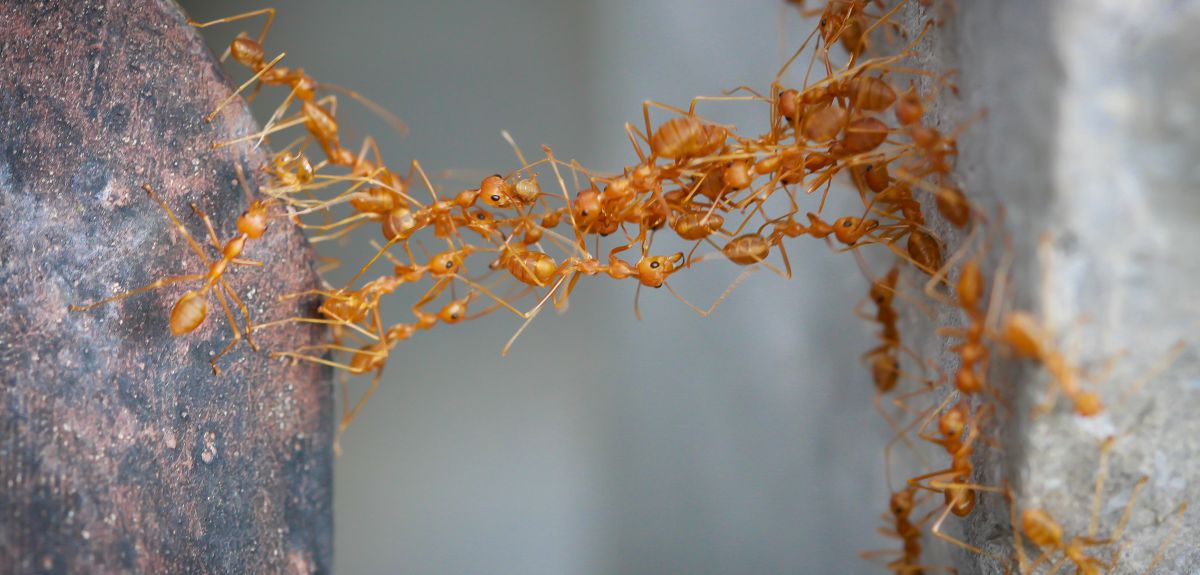
The evolution of division of labour
Life on earth is a complex beast, and complexity in nature is something that scientists have been trying to understand and explain for years. Understanding why traits such as division of labour have evolved in some species such as ants, but not entirely across the tree of life, may help us to decipher this complexity.
For the first time, researchers from the Oxford University Department of Zoology have tackled this question using game theory and mathematics to illustrate evolutionary patterns and develop the first comprehensible theoretical model of division of labour across the tree of life.
Division of labour occurs when individuals from a group do not engage in uniform cooperation, but rather have specialised roles (e.g. the distinct tasks given to worker bees to ensure the health and efficiency of their hive and Queen). However, natural selection acts at the level of the individual and not the group, so how has division of labour evolved to sometimes only involve sub-sets of the group like worker bees, or in species harbouring within-group conflicts, such as cooperatively breeding birds?
The findings, published in Nature Ecology and Evolution show how division of labour can evolve from the “bottom-up” due to benefits conferred to the specialising individuals rather than just for the good of the group. This runs counter to customary explanations of division of labour where group efficiency arguments are usually emphasised. While the theory demonstrates that division is more likely to evolve in species with closely related individuals where within-group conflict is minimal, there are also some key exceptions to this rule. For example, division of labour may be favoured despite high levels of within-group conflict if cooperation is essential for survival or reproduction.
The results also show that although division of labour is more likely to evolve in species with closely-related individuals, there are some key exceptions to this rule. For example, division of labour may evolve despite lower group relatedness if cooperation is essential for survival or reproduction.
Guy Cooper, lead author and a doctoral student in the Department of Zoology, said: ‘One of the most interesting findings of this paper is the degree to which the benefits of cooperation are shared within the group, which I believe is a factor that no one has looked at before.
'Essentially, the more equally the benefits are shared, the less that a helping individual may reap benefits from their own, personal investment in cooperation, and therefore, the more likely that natura selection will favour division of labour.’
The team now hope to test this theory with cross-species comparative analysis. At each level of complexity in nature - whether in the human body or insect society – division of labour is an important factor that drives the cohesion of the group and allows natural selection to act at higher levels. Understanding why it evolves in some cases and not others may enable us to understand how life has become more complex along some branches of the tree of life but not others.